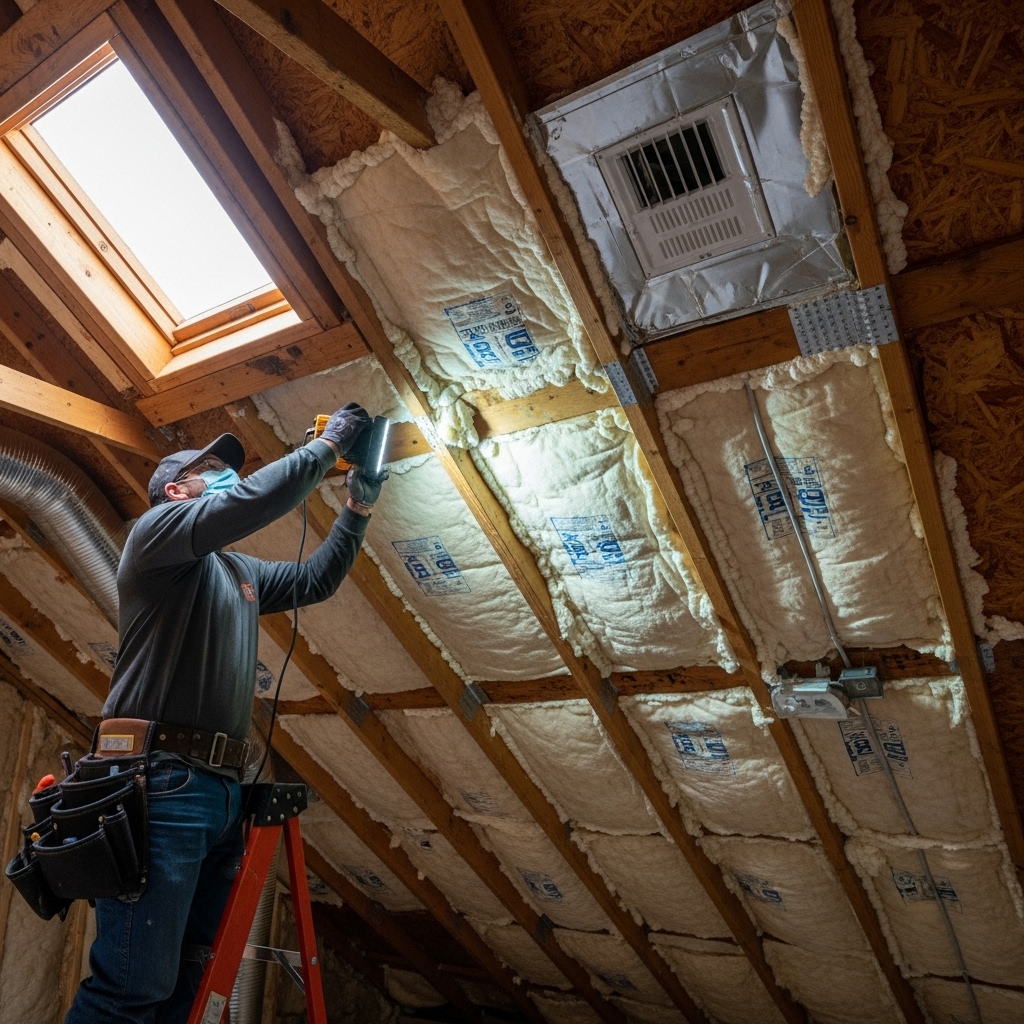Choosing the right contractor to upgrade your attic’s thermal envelope is one of the most impactful decisions you can make for comfort, energy performance, and indoor air quality. In Los Angeles, where summer heat, marine-layer moisture, wildfire season, and varied home vintages meet, the stakes are even higher. This guide walks you through a thorough, homeowner-friendly process for identifying skilled professionals who can deliver reliable results. If you are just starting your research, remember that a contractor’s approach to attic insulation should include more than just adding material—it should be a complete system solution tailored to your home and neighborhood microclimate.
Beyond technical credentials, you want a partner who listens, documents the attic’s current condition, explains trade-offs clearly, and follows best practices for safety, cleanliness, and building science. The right choice will protect your roof, keep your air cleaner, stabilize indoor temperatures, and support the durability of your HVAC equipment for years to come.
Know Your Home and Microclimate
Los Angeles is not one climate—it is many. Coastal homes may contend with salty air and frequent marine layer, while valley homes face higher peak temperatures and prolonged sun exposure. Hillside properties can experience significant diurnal swings, and urban heat islands push roof temperatures to extremes. Before interviewing contractors, think about your roof type, attic access, ventilation style, and whether your home has features like cathedral ceilings, knee walls, or skylight shafts that require special treatment.
Older homes may have knob-and-tube wiring, limited soffit ventilation, or insulation of unknown composition. Newer homes can still suffer from leaky ductwork and under-sealed penetrations around plumbing, electrical, and top plates. A strong contractor will consider these variables and explain how your attic’s air sealing, insulation, and ventilation interact to create a complete thermal and moisture strategy.
Licensing, Insurance, and Compliance
In California, legitimate insulation contractors hold appropriate licensure and carry active general liability and workers’ compensation coverage. Ask for the license number and the exact name on record so you can confirm it. Verify insurance and request to be listed as a certificate holder for the project. Competent contractors will be transparent about permit needs, safety plans, and waste handling procedures, including how they will bag and remove existing materials, if necessary.
Compliance is more than paperwork. It reflects the contractor’s commitment to safe attic work: proper ladders and fall protection for roof-level tasks, secure electrical practices when working around recessed lights or wiring, and careful containment to keep dust out of living areas. A conscientious, compliant firm will describe the steps they take to protect people, pets, and belongings—long before they describe insulation types.
Technical Approach: Building Science Matters
Attic projects succeed when they follow building science fundamentals. Look for contractors who emphasize:
- Air sealing first: sealing top plates, plumbing stacks, wire penetrations, chaseways, open wall cavities, and attic hatches before installing insulation.
- Balanced ventilation: adequate intake (soffits) and exhaust (ridge, gable, or roof vents) to control heat and moisture while preventing wind-washing.
- Thermal continuity: continuous coverage over the entire attic floor without gaps, compression, or thermal bridges, especially at eaves and around framing.
- Compatibility with recessed lighting: using appropriate covers and clearances as required by fixture type and safety standards.
- Ductwork awareness: inspecting, sealing, and supporting ducts because leaky or crushed ducts undermine the benefits of any insulation upgrade.
If the contractor talks about “just blowing in more material” without addressing air leakage and ventilation, that is a red flag. The best outcomes come from comprehensive solutions that treat the attic as part of a whole-house system.
Material Options and When to Use Them
Los Angeles homes can benefit from several material families, each with pros and considerations. Look for contractors who explain these options clearly and neutrally:
- Blown-in fiberglass: lightweight, non-settling modern blends that provide reliable thermal performance with good coverage and resilience against humidity.
- Cellulose: dense, borate-treated fibers that fill irregular cavities well, offer sound attenuation, and are valued for recycled content and fire resistance additives.
- Spray foam: air-sealing and insulating in one step when used at the roofline for unvented assemblies; requires strict substrate prep, ventilation planning, and trained crews.
- Batt systems: useful in specific, accessible areas or knee walls when installed with meticulous air sealing and fit; less forgiving of obstructions.
- Radiant barriers: reflective layers under roof decking in certain assemblies to reduce radiant heat gain; effectiveness depends on proper installation and attic ventilation context.
A qualified contractor will match materials to your attic’s geometry, ventilation strategy, and performance goals, not simply push a single product. They’ll also discuss fire ratings, smoke development, and compatibility with local conditions like wildfire risk and high roof temperatures.
Thorough Attic Assessment Process
Expect a structured inspection. A reliable contractor will:
- Document current insulation depth and coverage with photos.
- Identify air leaks with visual inspection or diagnostic tools.
- Check attic ventilation pathways for blockage or imbalance.
- Assess roof deck condition, signs of past leaks, and staining.
- Evaluate duct sealing, insulation, and layout.
- Look for pest evidence and plan safe remediation if needed.
- Review electrical conditions and clearance requirements.
They should explain findings in everyday language, correlate them to comfort or moisture risks, and prioritize actions. If removal of deteriorated or contaminated material is recommended, they should explain containment, bagging, and disposal protocols along with protective measures for your living areas.
Scope of Work: What a Quality Proposal Includes
A strong proposal will be detailed, clear, and specific, typically covering:
- Target thermal performance and how it will be measured.
- Air sealing tasks and the materials used for each location.
- Treatment around can lights, flues, and mechanicals with proper clearances.
- Ventilation adjustments or additions, including soffit clearing.
- Insulation type, coverage method, and installation standards.
- Protection of attic access, walk paths, and storage zones.
- Dust containment in living areas and cleanup steps.
- Waste removal plan for old insulation or debris.
- Documentation: before/after photos and post-install verification steps.
Ask for clarity on how they will ensure even coverage at the eaves, around truss webs, and near obstructions. Uneven application can create hot spots that undermine overall performance.
Crew Quality, Training, and Supervision
Great materials with poor installation deliver mediocre outcomes. Ask who will be onsite, whether the company uses in-house crews or subs, and how daily supervision works. Training matters: technicians should know how to handle insulation safely, seal air leaks effectively, and respect your home. A project lead should perform a walkthrough with you at the start and end of the job, answering questions and verifying that agreed-upon details were completed.
Indoor Air Quality and Clean Work Practices
Attic work can stir up dust and legacy debris. Professionals protect living spaces with containment, set up negative pressure when needed, and use HEPA filtration. They cover floors, protect HVAC returns, and maintain clear pathways for safe movement. Post-project cleanup should leave your home as clean as it was—or cleaner—with vacuumed registers, wiped surfaces, and carefully reinstalled attic hatch seals.
Communication and Customer Experience
How a contractor communicates during the planning phase foreshadows the experience you will have during installation. Look for clear timelines, realistic scheduling, and proactive updates. They should invite your questions, share photos, and be transparent about any discoveries during the job that may require a decision. The best partners educate without pressuring, and they document every step so you can feel confident about the outcome.
Checking References and Reputation
Ask for local references from neighborhoods similar to yours. When you speak to past clients, inquire about punctuality, cleanliness, problem resolution, and whether the home feels more comfortable now. Look for patterns in feedback rather than one-off comments. Ask to see project photos from attics like yours—vaulted spaces, low-clearance eaves, or complex framing—to confirm the crew has relevant experience.
Comparing Proposals Fairly
To compare options fairly, align scopes. Ensure each proposal addresses air sealing, ventilation, material choice, coverage strategy, treatment of recessed fixtures, duct considerations, and cleanup. A carefully prepared, comprehensive plan for attic insulation is more valuable than a bare-minimum approach that leaves leaks unaddressed. Scrutinize exclusions and assumptions so you understand what happens if hidden issues are discovered mid-project.
Red Flags to Watch For
Be cautious if a contractor:
- Dismisses air sealing as unnecessary.
- Cannot explain ventilation or ignores blocked soffits.
- Provides vague, one-line proposals without specifics.
- Refuses to provide license and insurance documentation.
- Pushes a single material as a cure-all without discussing your attic’s particulars.
- Downplays safety around recessed lighting, flues, or electrical.
- Avoids providing photos or references.
Attic upgrades are not a place for shortcuts. A rushed or incomplete job can trap moisture, create uneven temperatures, and leave energy savings on the table.
Aftercare, Warranty, and Documentation
Quality contractors stand behind their work and explain how to care for the attic after installation. They’ll discuss how future projects—like adding recessed lights or running new wiring—should be handled to protect the air barrier and insulation layer. Expect a clear warranty statement, photo documentation, and recommendations for optional follow-up checks, especially after roof work or major HVAC changes.
FAQ: Choosing an Attic Insulation Contractor in Los Angeles
Q: How long does a typical attic project take?
A: Duration depends on attic size, accessibility, and whether removal, air sealing, duct improvements, or ventilation upgrades are included. Many single-attic homes can be completed within a focused window, while more complex spaces may require additional time for meticulous sealing and cleanup.
Q: Do I need to remove my existing insulation?
A: Not always. If existing material is dry, clean, and evenly distributed, it can sometimes be augmented. Removal is wise when insulation is contaminated, matted, or concealing extensive air leaks. A thorough inspection will guide the decision.
Q: Will new insulation help with indoor air quality?
A: Yes—indirectly. The most significant gains come from air sealing that reduces infiltration of attic dust and outdoor pollutants. Proper ventilation also mitigates heat buildup that can drive unwanted air movement into living areas.
Q: How important is attic ventilation in Los Angeles?
A: Very. Balanced intake and exhaust help manage heat and moisture. In warm, sunny climates like LA, ventilation reduces roof-deck temperatures and protects insulation performance by limiting wind-washing at the eaves when properly detailed.
Q: What about recessed lights and chimneys?
A: They require careful treatment for safety and performance. Approved covers or clearances keep insulation away from heat sources, while air sealing around housings and flues limits leakage. A knowledgeable contractor will follow manufacturer and code requirements.
Q: Can I store items in the attic after the upgrade?
A: Limited storage may be possible if raised platforms or catwalks are built to avoid compressing insulation. Discuss storage plans so the contractor can integrate safe, insulated pathways without undermining coverage.
Q: How soon will I notice comfort improvements?
A: Many homeowners feel more stable indoor temperatures quickly, especially during hot afternoons and cool nights. The combination of air sealing, even coverage, and ventilation tends to reduce hot spots and drafts.
Q: What documentation should I receive?
A: Before-and-after photos, a summary of air sealing locations and materials, product information, and details about ventilation adjustments. Keep these records for future reference during roof or electrical work.
Take the Next Step Toward a Better Attic
When you’re ready to move forward, choose a contractor who treats your home like a system, communicates clearly, and demonstrates respect for safety and cleanliness. The right partner will deliver a quieter, more consistent indoor environment and protect your investment for years to come. Start by scheduling a thorough attic assessment that prioritizes air sealing, ventilation, and uniform coverage. To connect your goals with proven methods, explore professional solutions for attic insulation and ask detailed questions about the inspection process, scope, and aftercare. With a well-chosen team, your attic can become one of the hardest-working parts of your home.

